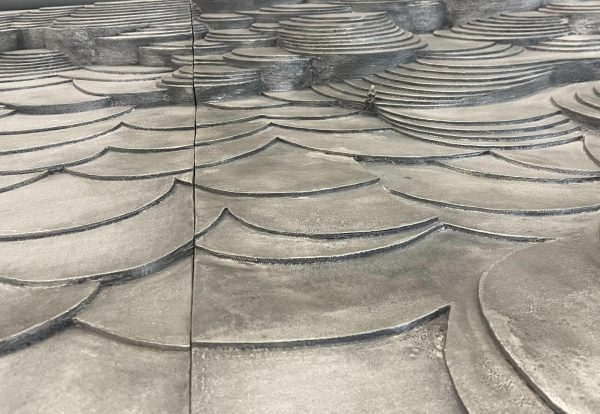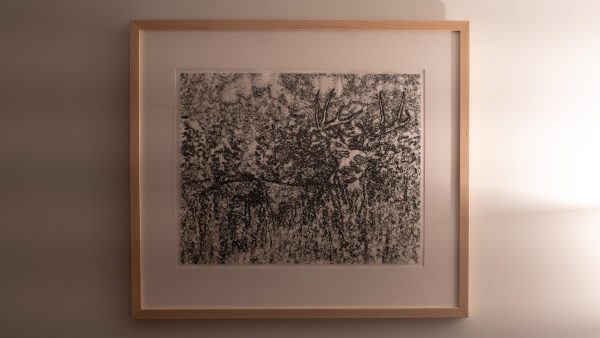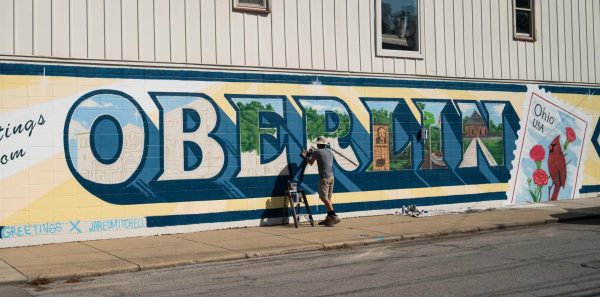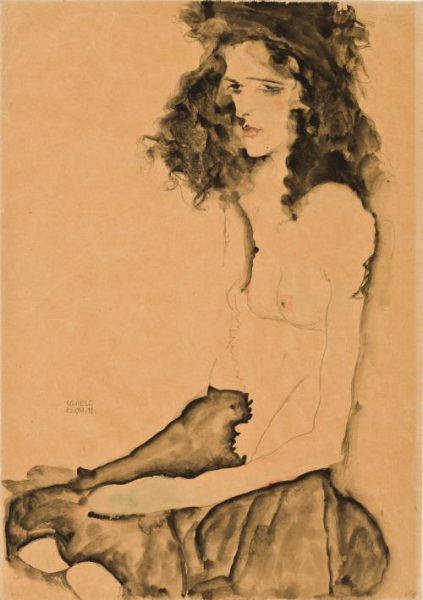Fantasy Coffin Maker Paa Joe Celebrates Dead With Style
In Ghana, death is not just about grief, pain, and suffering. Paa Joe — or Joseph Ashong — and his son and apprentice Jacob Ashong, are fantasy coffin makers. They bring style, celebration, and positivity into some of the darkest times for a family. On Monday, they visited Oberlin to give a talk, “Paa Joe and the Fantasy Coffins of Ghana.”
Since 1950, abebuu adekai, or proverbial coffins, have been deeply ingrained in Ghana’s cultural traditions, and are a great spiritual and economic asset to the community. Fantasy coffins are often personalized according to the occupation, position, or interests of the deceased person. The price Ashong quoted for Paa Joe coffins starts at $4,000, and they can take anywhere from a few weeks to a few months to make. Many families in Ghana believe in the afterlife, so they invest in elaborate coffins to ensure the comfort of their loved ones as they transition to their future lives.
“People in Ghana have a strong relationship with the deceased,” said Ashong, who gave the talk on behalf of his father. When someone dies, they are thought to cross a river to the afterlife. This is sometimes literally enacted in burial rituals, wherein “ancestors” dressed in white will wait on the opposite side of a river as relatives float the coffin across. “People who are deceased need some money to cross the river. … It’s like a toll booth. We like to give money to the deceased to cross the river into the afterlife.”
Paa Joe and Jacob Ashong decided to travel the world in order to garner recognition for their artform.
“Any time we travel abroad, people in the western world have a huge respect for our work, but in Ghana they don’t recognise this as art,” Jacob told The Guardian in 2016.
Assistant Professor of Art History Matthew Rarey organized Paa Joe’s Monday visit to Oberlin.
“I think I learned about Paa Joe in the first course on African Art I took as an undergraduate at the University of Illinois,” Rarey said. “It was only this year when I had the opportunity to travel to Ghana [that I] stopped [by] at Paa Joe’s workshop [Paa Joe Coffin Works].”
Paa Joe and Ashong have displayed their beautiful coffin art across the world in places like the British Museum, London; the Centre Pompidou, Paris; the Brooklyn Museum, and the Jack Shainman Gallery, New York City. These display coffins — unlike funerary ones — are made to survive periods of time with more durable wood and vibrant interiors, whereas those bound for burials are inlaid with white satin as a sign of farewell.
Many of the lecture attendees were students of art history.
“I’m taking an art history class with [Visiting Assistant Professor] James Hansen and he just emailed us about this,” said College sophomore Nora Vaughan. “My grandfather was a mortician and my mom grew up in a funeral home, so I’ve always been interested in mortuary studies.”
While many Americans are interested in the concept of fantasy coffins for their artistic merit — such as former President Jimmy Carter, who allegedly commissioned two — the uptake of fantasy coffins for deaths and funerals in the United States is minimal.
“This art form is really popular in terms of exhibitions across the United States — held in different venues, museums — but I don’t think it’s taken off in terms of a burial practice,” Rarey said. “[People in the U.S.] are particularly interested in the coffins, but only for the purpose of exhibition. I think there might be something about collecting an important work of art that people want to hold onto and continue to see rather than burying it.”
Lion, eagle, and fish designs are the most symbolic for coffins in Ghana, the lion and eagle in particular representing prestigious leaders and families. However, Paa Joe’s workshop is not limited to creating coffins in these traditional forms. He and Ashong often use photographs and real objects such as chili peppers, Coca Cola bottles, cell phones, and trees as inspiration for unique, intricate coffins. However, the traditional motifs remain an important part of their work.
“My favorite coffin would be the lion or the eagle,” Ashong said.
The unique balance of celebration and bereavement offers a very optimistic outlook on death and loss. Finding peace in the memory of lost loved ones is not an easy feat, but it is certainly a powerful message to spread across the globe through the vibrant, welcoming art of Paa Joe’s coffins.









